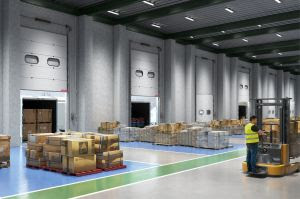The logistics sector is undergoing a full transformation, driven by technological advancements, new consumer demands, and the growing need for sustainable practices. 2025 promises to be a year of profound changes in the infrastructure and operations of logistics centers. For Giordania Tavares, CEO of Rayflex, a national leader in the manufacturing of high-speed doors in Brazil and Latin America, innovation in operational processes has shifted from a differentiator to a necessity.
According to the report The Future of the Last-Mile Ecosystem, by the World Economic Forum, around 20% of global logistics operations are expected to be automated as early as next year. This trend reflects the need to adapt distribution centers for continuous, agile, and secure workflows with the use of smart technologies.
“A modern logistics center requires everything from an efficient layout to the use of equipment that ensures fluidity, energy efficiency, and operational safety,” says Giordania.
Logistics centers require structures that combine technology and versatility. Equipment such as high-speed doors not only increases speed in loading and unloading operations but also reduces energy consumption and extends the lifespan of climate control systems.
The use of conventional doors with slow opening or inadequate sealing facilitates air exchange between climate-controlled and external areas, significantly increasing the effort and energy consumption of refrigeration systems, in addition to compromising thermal stability. ‘On the other hand, the use of shelters and levelers ensures efficient sealing, operator safety, and cargo integrity—competitive advantages in increasingly demanding markets,’ concludes the executive.


